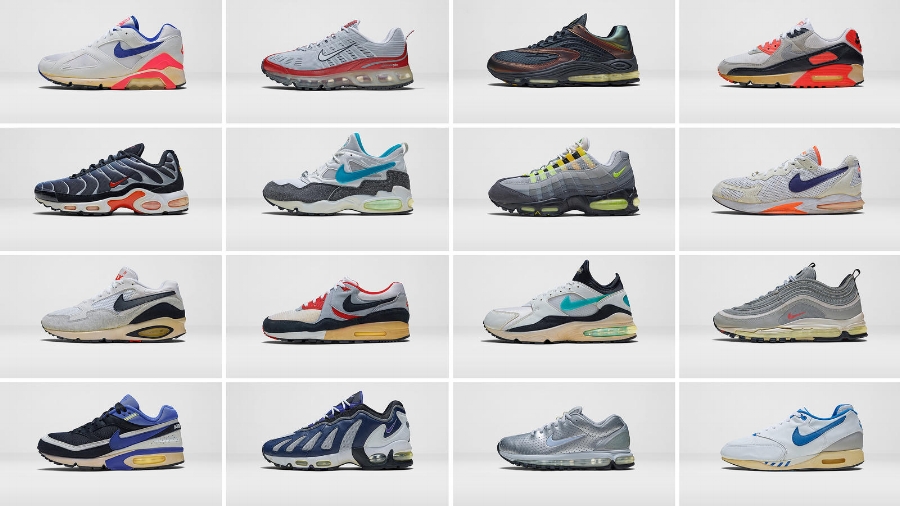In 1969, M. Frank Rudy left his day job with the National Aeronautics and Space Administration, where he had been working as aerospace engineer. He felt that he could do more as an independent inventor, in large part because he believed many of the inventions that were credited to him could be used not only in space but on land, should anyone be willing to be forward-thinking enough to take him on. Finding a brand that was, in fact, willing to take a chance on his invention at the time, the encapsulation of dense gases into rubber membranes, was not easy feat.
After pitching his idea to a handful of shoe manufacturers, all of which turned him down because the concept was too forward-thinking and risky in terms of retail sales, Rudy had all but given up. Then Nike called. The Portland, Oregon-based sportswear behemoth was prepared to think big and bet on Rudy and his nitrogen-filled shoe soles.
The deal was said be given the official go-ahead when Nike co-founder Phil Knight went for a run in one of the early prototypes. Not much more than a year later, in 1979, Nike introduced its first shoe that made use of Rudy’s “Air Cushioning” technology in Nike speak, that is.
A potentially even more significant event took place in 1987, though, when Nike released its first Air Max, a shoe that combined Rudy’s pressurized nitrogen technology with now-wildly-famous Nike designer Tinker Hatfield’s design handiwork.
Still, the earliest iterations of the Air Max were not without pushback. As Hatfield recalls in Netflix documentary series Abstract: The Art of Design, “It was widely discussed that I had pushed it too far [with the designs]. People were trying to get us fired.” Fast forward 31 years to 2018 and that controversial sneaker has led to more than $1 billion in sales for Nike.
To mark the date of the release of the first Air Max, every year on March 26, Nike celebrates Air Max Day. The celebration of the shoe collection – which boasts a revolutionary “air” sole that was designed by former aerospace engineer Frank Rudy, who thought his ability to encapsulate dense gases into rubber membranes could not only be used in space but in footwear – sees the Portland-based sportswear giant re-issuing classic Air Max sneakers of generations past alongside debuting brand new silhouettes featuring the highly-coveted silhouette all of which are made available for sale on Nike’s site.
Even more valuable than the multi-billion-dollar-generating Air Max collection, however, is the arsenal of protections that Nike has for the everything from the Air Max name to the design, itself, which have enabled the brand to claim exclusive rights for the past 31 years.
In light of the annual event, we take a look at some of the protections that Nike enjoys for everything from the Air Max name to some of the designs, themselves, which have enabled the brand to claim an array of exclusive rights over the past 31 years.
First things first: The Air Max name. Nike has enjoyed federal trademark protection over the term from the outset, with the U.S. Patent and Trademark Office issuing a registration for “Air Max” for use on footwear in October 1988. This registration is joined by a whole slew of related marks, including VaporMax and Air Trainer Max, among others.
These rights have enabled Nike to shut down no shortage of counterfeit-sellers from using its “Air Max” and related marks. For instance, in the summer of 2016, Nike – with the help of Xiamen Customs of Fujian Province – was able to seize several thousand shoes bearing the “Air Max” trademark that were slated to be shipped out of China, where the majority of the world’s counterfeit goods are manufactured.
In addition to the name, Nike has federally registered trade dress protection for the appearance of the Air Max 95. For the uninitiated, trade dress is a type of trademark law that extends to the distinctive “total image of a product,” and it “may include features such as size, shape, color or color combinations, texture, graphics or even particular sales techniques.”
Since November 2009, Nike has maintained protection over “the design of the stitching on the exterior of the shoe, the design of the material panels that form the exterior body of the shoe, namely, the horizontal wavy panels and the vertical raised panels on sides of the shoe, and the relative position of these elements to each other” of the Air Max 95, meaning that the design of the shoe may not be legally copied by other footwear makers.
Still yet, Nike’s most expansive portfolio of intellectual property rights in terms of its Air Max designs comes by way of patents. To begin with, in 1979, Nike – by way of inventor Mr. Rudy – received patent protection for the small gas-filled membranes fitted into the soles of running shoes, which would become known as the Nike “Air” system, a patent which has since expired due to the limited duration associated with patent protection.
Since then, Nike has maintained a whole handful of design patents for the appearance of its various Air Max designs and the many individual components of the shoe, ranging from the upper and the sole designs of various Air Max models to the “elevated plate structure incorporated in the sole structure and optionally including a fluid-filled chamber,” and the “adjustable pressure regulating valve” that is present in the heel design.
Taken together, this bundle of protections, among others, have enabled the various Air Max iterations to maintain the title of some of the most iconic shoes ever-made and at the same times, allowed Nike to have exclusive rights in the designs much to the benefit of its bottom line.











